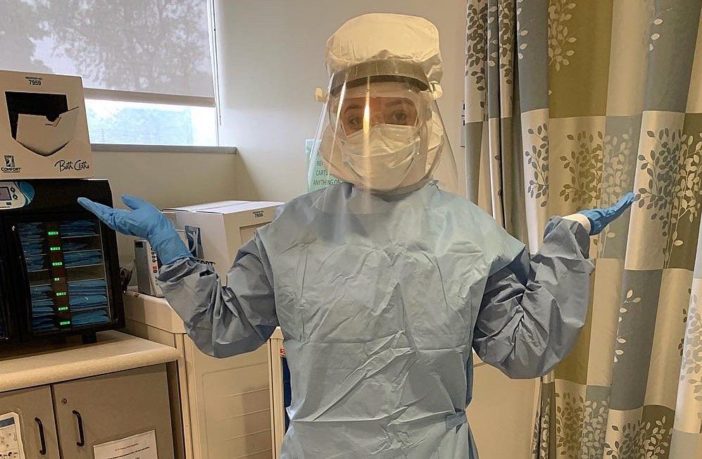Photo courtesy of KAyla Cummins, BSN,RN
Respiratory syncytial virus (RSV) has been making headlines due to the high numbers of children battling the illness who have been hospitalized nationwide. RSV symptoms are the same as the common cold, and health care providers may have trouble diagnosing it. According to the National Library of Science, a runny nose or congestion appears in common colds, but a lot more mucus may be present with RSV.
Wheezing
Since infants and toddlers have smaller lungs, caregivers may hear wheezing, but with RSV, it will sound a little more high-pitched and be more noticeable when exhaling. Look out for wheezing, along with short, shallow and rapid breathing.
Irritability
Low energy and having difficulty making yourself or your child comfortable might be a sign that RSV is present.
No appetite
RSV may cause so much trouble breathing, that it makes it hard to eat. If your baby is nursing or feeding less than usual, this could be a sign that something more than a cold is occurring.
Excessive coughing or sneezing
This symptom is a tricky one, and hard to tell if it’s a cold or RSV. Normally, the cough is more wet-sounding with RSV than it is with a cold.
Changes in breathing
Rapid and shallow breathing, flaring of the nostrils, rhythmic grunting while breathing, and intense belly breathing are all signs that it is time to call a doctor immediately.
Kayla Cummins, BSN, RN, has firsthand experience dealing with COVID-19 and RSV patients. She shared precautions to take to prevent these illnesses in children and adults.
“Give your body what it needs. You should hydrate adequately, get plenty of sunlight, find time for physical activity, and discuss any vitamins and supplements you may need to add to your routine with your primary care provider. Practice proper hand hygiene! Wash your hands often and properly. Ensure you scrub with soap for at least 20 seconds before rinsing. It would be best to wash your hands multiple times during the day, especially before and after food prep, before eating, and when using the restroom. Keeping hand sanitizer on you is great for those on the go instances when a sink, water, and soap may not be available. Stay away from those that are sick. While this may seem like a no-brainer, I can’t tell you how many times I have seen patients in the ER that know exactly who they got sick from because they willingly were around them. Yes, COVID has weakened, but it is still causing severe long-term damage to many patients. Follow the most up-to-date CDC guidelines for quarantine times.”



